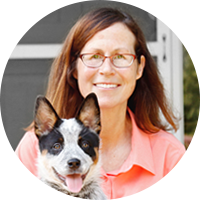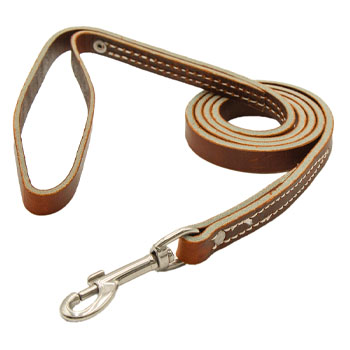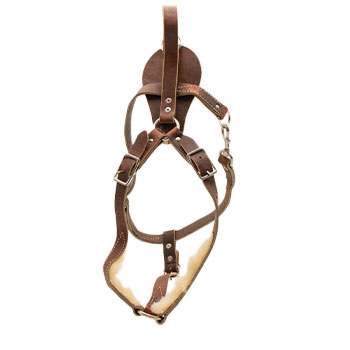May 19, 2011
My dog left the blind in his SchH I Bark and Hold. My helper recommended muzzle work. Do you agree?
Full Question:
If you will, please voice your opinion.. I have a 3 yr. old GSD, German lines, who got his SCH I 2 weeks ago. We had never practiced a "judge" coming in on the B&H which was not real intense to begin with...we had only been working it for some 6 wks prior to that (once or twice a week). At trial the judge caused him to leave the blind and I had to give the reverie command again.. he went back in and was satisfactory. He does well on the courage test, attack on handler, etc.Now, in an attempt to strengthen the B&H, our helper has come up with the idea of muzzle work to intensify the blind work. The dog responded first time around to the muzzle work, (tried to bite the crap out of the helper after knocking him down, etc.) Will this really help the B&H and might it cause even more defensive behavior and possibly even avoidance in the blind work, or other problems??? I am having 2nd thoughts about this method.
Thanks,
Wally

 Cindy's Answer:
Cindy's Answer:
Your helper is making a mistake.
Muzzle work may help the dogs intensity, but this is not going to solve the problem of focus.
Walking up to the tail of the dog is something that a lot of judges do (especially in the past few years since they saw Hans Rudenaur do it in the California Nationals the head SV Sch Judge.)
The way to correct this is to have different people standing on the field all the time in training, and playing the part of the judge. They should have a clip board in their hand, and do the exact same thing as a judge would do.
If the dog looks back when you or one of these people walk up behind the dog the helper should turn and run, or clip the dogs ear or chin with the stick (a good hard one).
When that happens the dog will bite and the helper treats it as an attack and drives the dog out of the blind. This work may require some prong collar leash work to keep the dog clean and maintain the bark if the dog anticipates and bites without the helper moving when someone comes up. But the dog will quickly learn to not take his eyes off the helper or he will be whacked.
This work is called NEUTRALIZING - it can be started on a tie out with the dog doing a B&H. The handler walks up and stand next to his dog (WITHOUT LOOKING DOWN OR SAYING ANYTHING) The handler can then move back several steps and stand for a few seconds and then walk back up next to the dog. During this exercise the dog should never look at the handler. When the dog does this properly it can have a bite. When the helper moves the handler should give a bite command.
If this is done properly the intensity of the bark will increase as someone comes up behind him, because the dog will anticipate the attack. But remember the obedience needs to be there to eliminate the bumps.
If the dog bumps the sleeve the handler gives a loud NO!!!! command. The dog must know that this is not an acceptable thing to do.
The Dutch trainers in the KNPV are masters at using people to act as judges in training the clubs I go to NEVER do obedience without having a member walk up and explain what is expected (just as a judge would do in KNPV) before the training exercise and then walk around like a judge does in the exercise.
Muzzle work may help the dogs intensity, but this is not going to solve the problem of focus.
Walking up to the tail of the dog is something that a lot of judges do (especially in the past few years since they saw Hans Rudenaur do it in the California Nationals the head SV Sch Judge.)
The way to correct this is to have different people standing on the field all the time in training, and playing the part of the judge. They should have a clip board in their hand, and do the exact same thing as a judge would do.
If the dog looks back when you or one of these people walk up behind the dog the helper should turn and run, or clip the dogs ear or chin with the stick (a good hard one).
When that happens the dog will bite and the helper treats it as an attack and drives the dog out of the blind. This work may require some prong collar leash work to keep the dog clean and maintain the bark if the dog anticipates and bites without the helper moving when someone comes up. But the dog will quickly learn to not take his eyes off the helper or he will be whacked.
This work is called NEUTRALIZING - it can be started on a tie out with the dog doing a B&H. The handler walks up and stand next to his dog (WITHOUT LOOKING DOWN OR SAYING ANYTHING) The handler can then move back several steps and stand for a few seconds and then walk back up next to the dog. During this exercise the dog should never look at the handler. When the dog does this properly it can have a bite. When the helper moves the handler should give a bite command.
If this is done properly the intensity of the bark will increase as someone comes up behind him, because the dog will anticipate the attack. But remember the obedience needs to be there to eliminate the bumps.
If the dog bumps the sleeve the handler gives a loud NO!!!! command. The dog must know that this is not an acceptable thing to do.
The Dutch trainers in the KNPV are masters at using people to act as judges in training the clubs I go to NEVER do obedience without having a member walk up and explain what is expected (just as a judge would do in KNPV) before the training exercise and then walk around like a judge does in the exercise.
100% (6 out of 6)
respondents found this answer helpful


Can't find what you're looking for?







